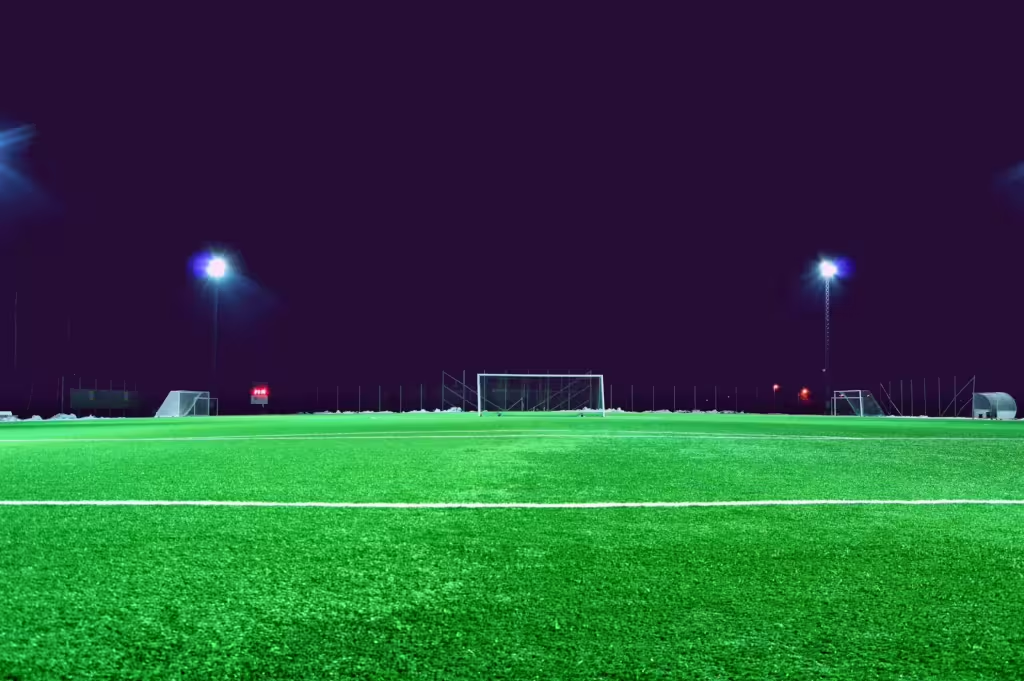Longtime readers and lifelong soccer fans will no doubt be aware that soccer has been the world’s most popular sport for quite few decades now. Known as football in most countries outside the United States, soccer is played in just about every country and loved by millions of fans across the globe. Kids around the world love to play it just as much as they love to cheer alongside their parents when watching. But have you ever wondered where this amazing game came from? How did the simple act of kicking a ball into a net become such a big deal for so many billions of people?
The secret to soccers success can be found not only in its broad appeal but in its historic rise to fame. On this article, we will take you and your kids on a fun, friendly journey through the history of soccer—from its ancient beginnings to the sport we know and love today. Along the way, we will meet the likes of emperors, school kids, and factory workers to learn what makes soccer the phenomenon it has become. Get ready to discover the wild and wonderful story of the world’s most popular game!
What Is Soccer?

Before we dive into the history, let’s make sure we’re all on the same page as far as what soccer actually is. If we had to define soccer, or football, depending on where you live, we would call it a team sport played between two teams of 11 players. The goal of this sport is to score points by kicking a ball into the opposing team’s net or goal. Players use their feet, heads, and bodies, essentially, everything but their hands, not to move the ball towards this goal. The only exception are players called goalkeepers, who protect the goal and are allowed to use their hands while in the penalty area.
Regardless of the rules and specifics, soccer is a game that emphasizes teamwork, strategy, fitness, and creativity in its players. Whether you play on a big field, in your backyard, or even in a hallway, the heart of soccer is simple: keep the ball moving and have fun while doing it.
Ancient Games That Came Before Soccer
Soccer didn’t just pop up into the zeitgeist overnight. As a matter of fact, there were many games where people kicked balls that came before it. These games existed for thousands of years in many different parts of the world and some historians would consider soccer similar to bread in that it has been independently invented in different regions, many times over; albeit with many different recipes when it pertains to rules. Let’s explore a few of the ancient ancestors of soccer:
Cuju (China)
This sport, invented in China around 2,000 years ago, is one of the most similar in terms of its rules to modern soccer. This game was called Cuju (pronounced “tsu-joo”) and in it, players kicked a leather ball through a small hole in a net using only their feet. For Cuju, the net was smaller and the game was more a part of military training than it was for sport. That said, it was also played for fun at royal courts and may be the earliest version of a soccer-like game that we know about.
Kemari (Japan)
Around the same time that soldiers and nobles started playing Cuju in China, Kemari started in Japan. This sport was a ceremonial game where players formed a circle and tried to keep a ball in the air by kicking it; sort of like a larger version of hacky sack (for all you 90’s kids out there.) Kemari differs from other sports analogues in that there was no competition—the goal was to work together and keep the ball from touching the ground. Some people still play Kemari at festivals today and eagle-eyed parents will see similarities to “Keepy Uppy” of Bluey fame.
Harpastum (Rome)
If we go back to other parts of the ancient world, we might discover a rough-and-tumble game called Harpastum, which was played by the Romans. This archaic game involved a ball and a lot of pushing, tackling, and strategy. Historians believe that Harpastum was more akin rugby than soccer, but it shows that ball games of a similar ilk were popular even back then.
Indigenous Ball Games
Many Native American cultures had their own versions of ball games that can look quite familiar to some of today’s sports. Indeed, long before European soccer existed, Mesoamerican civilizations played a game called Ōlamaliztli with a rubber ball on a stone court. It wasn’t soccer, but it was an early example of sports using a ball and moving it towards a goal.
All of these early ball games show that the idea of kicking, passing, and scoring has always fascinated people. But the modern game of soccer had to wait until medieval Europe before it truly came into being.
Medieval Soccer: The Wild Days
In medieval England (around 800 to 1400 years ago), people’s lives were…let’s face it, pretty rough. So it should come as no surprise that they found similarly rough things to do in their leisure time. To wit, they played a chaotic version of soccer in their towns and villages. These early soccer games had very few rules, and they weren’t played on fields. Instead, huge crowds of people would gather in the streets, kicking a ball (or animal bladder in many cases, from a pig) from one end of town to the other.
These games were known as mob football in some circles, but were more like town-wide brawls than organized sports matches. There were no teams, hardly any rules, and lots of pushing, shoving, and potential for harm. Many of the issues with the game came from the fact that the goals were so far apart, sometimes at opposite ends of a town, leaving a wake of property damage and injuries in the wake of play. In some cases, these “matches” could get so wild that kings and city leaders had to stop or ban the game entirely because of the potential for damaged property and physical harm. Despite all this, the people loved it, and despite the bans, the spirit of soccer lived on; albeit in a more civilized form.
The Birth of Modern Soccer in England
The version of soccer we know today began to take shape in England in the 1800s. Here’s how the world’s most popular sport first came into being:

Schoolyard Soccer
In the 19th century, boys at English schools like Eton, Harrow, and Rugby played their own version of soccer during their breaks. Each school had its own rules for them game, which was an issue when intramural play was suggested. For instance, some versions allowed players to use their hands, some didn’t.
To solve this issue, groups of students and teachers came together to write what would become the common rules of soccer. In 1863, this group formed the Football Association (FA) in London. These rules banned using hands (which led to the creation of rugby as a separate sport, entirely) and instead focused on kicking, passing, and scoring goals; hence the name football. And Thus, modern soccer was born!
The First Clubs
The first official soccer clubs were formed around the same time and in the same place, England in the mid-1800s. The oldest known club is Sheffield FC, first founded in 1857. As the sport grew, leagues and tournaments started forming in other locations. Soccer was becoming more organized and more popular with every passing year.
Working-Class Heroes
In the late 1800s, soccer spread beyond schools and well-to-do sectors of society, and into factories and towns. Workers played in teams after long shifts to ease the tension and move their bodies. This helped soccer become the sport of the people that many know it as in the modern. Even those after work matches drew big crowds, and players of note soon became local heroes in their own right.
By the end of the 19th century, soccer had leagues, referees, uniforms, and fans from every walk of life. It was well on its way to becoming the global game we know today.
Soccer Goes Global
England may have started modern soccer, but it didn’t stay there for long. As sailors, merchants, and workers moved to different parts of the world, they carried their game with them. Like the British Empire, soccer spread to every corner of the world.
- In Brazil, British workers introduced soccer in the 1890s. It quickly became a national passion, with colorful styles and incredible dribbling.
- In Africa, soccer spread during colonial times and grew into a uniting force across countries.
- In Asia, students and soldiers picked up the game and built strong national teams.
- Soccer took longer to grow in the United States, but today it’s one of the most-played youth sports, even if it hasn’t reached the heights of global acclaim that it has elsewhere.
Today, soccer is now played in nearly every country. It connects children from different cultures and backgrounds in a way that few other concepts, hobbies, and even modern fandoms do. One ball, one goal, one world—and countless stories.
The FIFA World Cup: Soccer’s Biggest Stage
In 1930, the first FIFA World Cup was held in Uruguay; quite a ways from the fields of Eton, but a clear indication of soccer’s new worldwide popularity. Thirteen teams participated, and Uruguay themself won the tournament. Today, the World Cup is the most-watched sporting event in the world, even more than the Olympics or the vaunted, American Super Bowl.
The World Cup is held every four years and features national teams from around the planet. Winning the World Cup is the highest honor that a soccer team can recieve. Some legendary players who have starred in the tournament include:
- Pelé (Brazil) – A teenage superstar who helped Brazil win three World Cups.
- Diego Maradona (Argentina) – Famous for his skill and his “Hand of God” goal.
- Mia Hamm (USA) – A pioneer in women’s soccer who led the U.S. to two World Cups.
- Lionel Messi (Argentina) – One of the greatest of all time, who won the 2022 World Cup.
There is also a FIFA Women’s World Cup, an event which was only first held sixty-some-odd years after the original in 1991. It has grown tremendously since then, inspiring girls around the world to play and dream big.
Fun Soccer Facts for Kids
- The fastest red card ever given was just 2 seconds into a soccer match!
- A soccer ball has 32 panels, each one representing the countries in Europe.
- The word “soccer” comes from “Association Football,” shortened to “assoc,” then “soccer,” though many people still call it football.
- Brazil has won the most World Cups: 5 titles.
- The largest soccer crowd ever recorded was over 199,000 people in 1950!
- Women’s soccer was banned in some countries until the 1970s!
- The average professional soccer player runs 7 miles in one game.
- In Antarctica, scientists have even played soccer on the ice; which means it has been played on every continent!

Cultured Athlete Says…
As you can see, today, soccer is more than just a sport. It’s a way for people from everywhere on Earth to connect across the divides of oceans, religions, creeds, and cultures. Soccer brings joy, excitement, and pride to people and unites them in ways that few other things do. For children, soccer helps kids learn important life lessons about fairness, effort, and being part of something bigger than themselves.
Whether your child is kicking a ball for the first time or dreaming of playing in a stadium someday, take a moment to remind them that they are part of a long, amazing tradition that can be traced back to some of humanity’s earliest civilizations. From ancient China to schoolyards in England to the World Cup stage, soccer has always been about heart, hustle, and hope.
So the next time you see a ball rolling across the grass, remember: you’re not just seeing a lone soccer ball, you’re seeing a piece of history in motion.
Discover more from CulturedAthlete
Subscribe to get the latest posts sent to your email.






